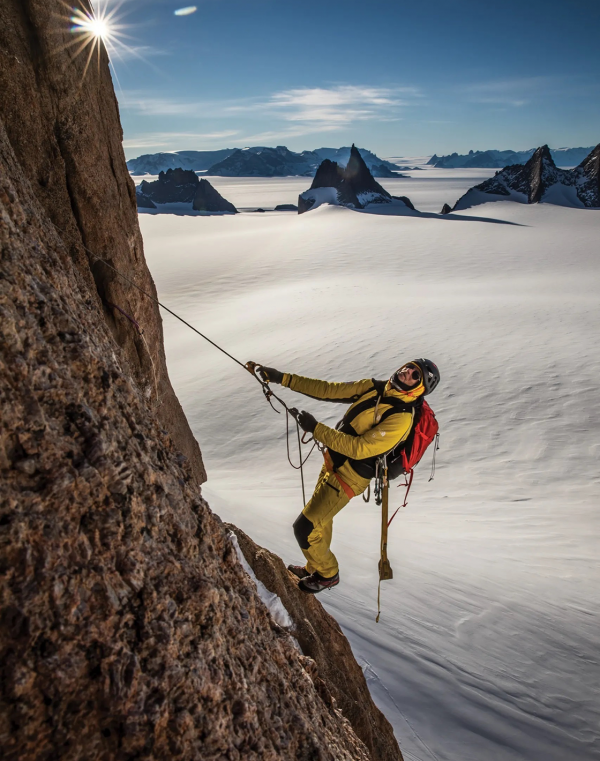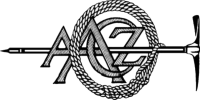- Home
- Nepal
- Adventure Activities
- Peak Climbing
- Mountain Expedition
- Local Tours
- Sirubari Village Homestay
- Ghale Gaun
- Kalinchowk Tour
- Halesi Mahadev - Maratika Cave package
- Chitwan Jungle Safari
- Day tour in Kirtipur
- Day tour in Kathmandu City
- Spiritual Tour to Muktinath
- Chitlang and Kulekhani
- Bardiya National Park
- Jeep Tour to Rara Lake
- Gosaikunda Lake
- Manakamana day Tour with cable-car ride
- 4WD Jeep Tour to Upper Mustang
- Family Holidays
- Heli & Mountain Flights
- Trekking Routes
- Kailash Mansarovar
- Bhutan
- Tibet
- Multi Country
- Domestic Flights
- Contact
- Home
- Nepal
- Adventure Activities
- Peak Climbing
- Mountain Expedition
- Local Tours
- Sirubari Village Homestay
- Ghale Gaun
- Kalinchowk Tour
- Halesi Mahadev - Maratika Cave package
- Chitwan Jungle Safari
- Day tour in Kirtipur
- Day tour in Kathmandu City
- Spiritual Tour to Muktinath
- Chitlang and Kulekhani
- Bardiya National Park
- Jeep Tour to Rara Lake
- Gosaikunda Lake
- Manakamana day Tour with cable-car ride
- 4WD Jeep Tour to Upper Mustang
- Family Holidays
- Heli & Mountain Flights
- Trekking Routes
- Kailash Mansarovar
- Bhutan
- Tibet
- Multi Country
- Domestic Flights
- Contact
Island Peak Climbing

An exciting Peak Climbing Expedition
Island Peak lies in the center of the Everest Region of Nepal and is the most popular of Nepal’s 33 designated trekking peaks. As you summit this peak, you get the splendid views of Mount Everest (8848 m), Mount Lhotse (8500 m), Mount Makalu (8478 m), Mount Nuptse (7880 m), Mount Ama Dablam (6812 m) and Mount Baruntse (7129 m) at the closest view. It’s a great summit for first time climbers who are looking for something a little more challenging then the Everest Base Camp Trek and a good peak to start with for those with more mountaineering ambitions in Nepal.
1 - 10
Detailed Itinerary
-
Day 01: Arrival in Kathmandu (1,300m/4,264ft)
Upon your arrival at Tribhuwan Intl Airport at Kathmandu, our office representatives will welcome you and transfer to your hotel. -
Day 02: Kathmandu trip preparation
Today, guide will check set of equipment in order to make sure that they are in a perfect condition for the coming trip. -
Day 03: Fly to Lukla (2,800m/9,184ft) then trek to Phakding (2,652m/8,700ft): 40 min flight, 3-4 hours trek
Today, we will take a flight to Lukla. After flying above the breathtaking green and white mountains, we reach Tenzing-Hillary Airport at Lukla. We then start our trek through the prosperous village of Lukla until we reach Phakding. -
Day 04: Phakding to Namche Bazaar (3,440m/11,283ft): 5-6 hours
We walk through beautiful pine forests and then along Dudh Koshi River ending our nature-filled journey at Namche Bazaar. -
Day 05: Namche Bazaar (3,440 m/11,283 ft): Acclimatization Day
This is the day set aside for acclimatization. We can either stroll around Namche’s quaint villages or come in contact with the Sherpa people and their rich culture, or we can hike up to the Everest View Hotel and enjoy an up-close view of the mighty Everest. -
Day 06: Namche Bazaar to Tengboche (3,870m/12,694ft): 5- 6 hours
After breakfast, we trek towards Tengboche. It is an easy walk from Namche to Phunki. Upon reaching Phunki, we ascend towards Tengboche, a village that houses the very famous Tengboche monastery which is the largest monastery of the Everest region. -
Day 07: Tengboche to Pheriche (4,200m/13,776ft): 4-5 hours
We descend for about half an hour through a forest before crossing a river. Next, we trek uphill and notice that as we climb higher, the landscape becomes drier. We walk past a traditional Sherpa village of Pangboche before reaching Pheriche, a beautiful village located on a riverside. -
Day 08: Pheriche to Lobuche (4,930m/16,170ft): 5-6 hours
We trek up the steep terminal moraine of the Khumbu Glacier, and then pass through the boulder-strewn slopes as we ascend Chupki Lhara. The trail then continues to the Khumbu Glacier moraine and we find ourselves facing several great peaks – Khumbutse, Lingtren, Pumori and Mahalangur Himal. -
Day 09: Lobuche to Gorak Shep (5170 m/16,961ft), visit Everest Base Camp (5364m/17,594ft): 6-7 hours
We take the trail to Everest Base Camp through the once vast Gorak Shep Lake. Upon reaching the Everest Base Camp, we see tents of mountaineers that stand out in bright colors against the monotony of gray surroundings. Nuptse, Khumbuste and Pumori are the mountains we can view from the base camp. We get back to Gorak Shep for a good night’s rest. -
Day 10: Gorak Shep to Kala Patthar (5545m/18,192ft) and back to Lobuche (4940m/16,207ft): 7-8 hours
We prepare for an early morning departure. Familiar peaks such as Lingtren, Khumbutse, and Changtse tower to the east even as Everest begins to reveal itself. But, it is upon reaching Kala Patthar that we get to see close and formidable views of Mt. Everest. We take pictures, enjoy the magnificent mountain panorama, and then return back to Lobuche for a good night’s rest. -
Day 11: Lobuche to Kongma La (5,535m/18,159ft) to Chhukung (4,730m/15,518ft): 6-7 hours
We trek via Khumbu Glacier to Kongma La Base Camp (5,000m/16,404ft). The ascent to Kongma La pass is the most difficult part of our trek today. In the Kongma La, we see cairn wrapped in prayer flags to mark the pass. Then we descend gradually to Imja Khola valley, followed by another descent to Chhukung, a small summer settlement. -
Day 12: Chhukung to Island Peak base camp (5,200m/17,060ft): 3-4 hours
We climb south then turn east to the main line of the valley. We then walk on a winding path below the southern flank of the moraine from the Lhotse Glacier. Next, we continue walking on a pleasant trail along a streamside. A crisscross route through the Imja and Lhotse glacier moraines leads to a wide valley flanking the SW side of Island Peak. -
Day 13: Pre-climb training on Island Peak Base Camp
We begin our pre-climb training today after breakfast. Although it is not mandatory to have prior training for Island Peak Climbing, we strongly believe that some training experience will boost your confidence and climbing skills to increase the chances of scaling the summit as well as to fully enjoy the experience. -
Day 14: Island Peak base camp to Island Peak summit (6,189m/20,305ft), back to base camp: 10-12 hours
The trail moves up beyond the base camp for several hundred meters before striking off the steep hillside. As we climb up the hill, we will see that the slope narrows and the trail enter a steep rock channel. The route then follows a ridgeline, which leads to an exhilarating and exposed traverse onto the snout of the summit glacier. -
Day 15: Island Peak Base Camp to Pangboche (3,985m/13,074ft) 5-6 hours
Today’s walk will be a much easier as we descend to the lower altitudes. Following the same route back through the wide valley of Khumbu Khola, we pass through the beautiful Sherpa villages, Orsho and Shomare. We can also take a different trail to visit the Gompa in Upper Pangboche, which is believed to be the oldest in the Khumbu region or take the regular trail to reach Pangboche. -
Day 16: Pangboche to Namche Bazaar (3,440m/11,286ft): 4-5 hour
From Pangboche we retrace our steps down to the Imja Khola and up through the forest to Tengboche.our trail follows the Dudh Koshi gorge descending rapidly through the pine forests before reaching Sansa. We keep a lookout for wildlife such as mountain goats, snow leopards, colorful pheasants, etc., while passing through the forest. After passing a chorten, we reach the army camp at Namche Bazaar. -
Day 17: Namche Bazaar to Lukla (2,800m/9,186ft): 6-7 hours
The trail descends steeply downward. After crossing the suspension bridges over the fast flowing Dudh Koshi and its tributaries, the trail becomes more level and natural. -
Day 18: Fly to Kathmandu (1,350m/4,428ft)
We catch an early morning flight to Kathmandu after our long mountain journey. -
Day 19: Final Departure
Our representative from Mountain Sun Valley Treks will take you to the airport, approximately 3 hours before your scheduled flight.
This trip can be redesigned or redeveloped as per your taste, For more information please e-mail us at This email address is being protected from spambots. You need JavaScript enabled to view it.
Cost and dates
We do small group trek or private trip as your request.
For quick information / contact us at whatsapp/viber + 977 9841815039
Or Drop us inquiry at This email address is being protected from spambots. You need JavaScript enabled to view it.
Tips & Resources
What's Included
-
Airport pickup and Departure
-
Domestic Flights(KTM-LUA-KTM)
-
Climbing Permit and National Park fees
-
Teahouse accommodation during the trek
-
All meals and camping equipment for island Peak Climbing
-
2 Night 3 Days Full Board Service while climbing Island Peak(chukung-Chukung)
-
All ground transportation by bus and jeep
-
English speaking guide and necessary
-
Porters
-
Insurance and equipment for guide and porters
What's Excluded
-
Hotel in Kathmandu (if you like to book hotel by us, we use Nirvana Garden Hotel)
-
Emergency rescue evacuation
-
Personal expenses (phone calls, internet, laundry, bar bills, battery recharge, extra porters, bottle or boiled water, shower, etc).
-
Climbing Equipment
Equipment List (Personal Accessories)
-
Fleece jacket
-
Thermal shirts
-
Fleece/sweatpants
-
Day-wear shirt/rain pants
-
Trekking pants
-
Warm hat
-
Sunglasses
-
Gloves
-
Water bottle
-
Torch / Flashlight
-
Quick drier Towel
-
Sunscreen and lip balm
-
Water purification
-
A set of Earplugs
-
Hiking Boots
-
First aid kit
Equipment List (Climbing Gear)
-
Ice Axe
-
Crampons
-
Alpine Climbing Harness
-
Carabiners
-
Climbing helmet
-
Ascender
-
Trekking Poles
-
Gaiters
-
Fix Rope
-
Gas Stove
-
Rock Piktung
-
Sabel
-
Tape Sling
Frequently Asked Questions
Peak climbing refers to a mountain or hill peak that has to be attemp by climbing. Trekking peaks are generally between 5500m to 6500m. We can get the climbing permits from Nepal Mountaineering Association (NMA).
Peak climbing difficulty depends upon the peak. There are easy level to technical and challenging level climbing peak, any participants with good physical can climb any peak.
A licensed, trained and experienced Climbing Sherpa Guide will lead you while Peak Climbing.
We recommend you buy all the climbing equipment with your guide in Kathmandu. It helps to save money and you will be buying only reasonable equipment.
The best season for trekking peak is in September and October | March April and May.
During the access trek you will stay in a teahouse. After you reach basecamp you will be do camping and your climbing guide will prepare high altitude food.
In case of a climb, VHF or satellite phones are available at the base camp. In both cases, weather can play an important role in communication.
Yes.Travel Insurance is absolutely necessary. Please check this info for insurance.
It depends upon the difficulty level and height of the peak, weather and individual’s ability to cope up with the environment. Normally, the ascent and descent between base camp and peak will take one to two days.
Visit us
-
JP Marga, Thamel, Kathmandu, Nepal
-
+977-01-5365371
-
+977 98418-15039
(Whats App, Viber & Telegram)








